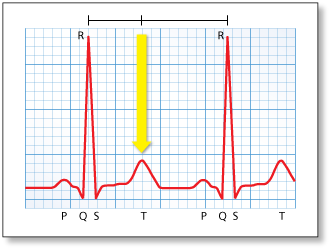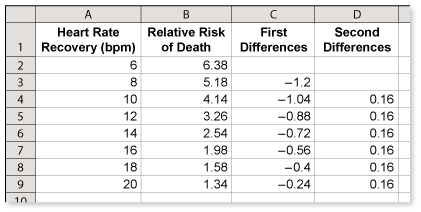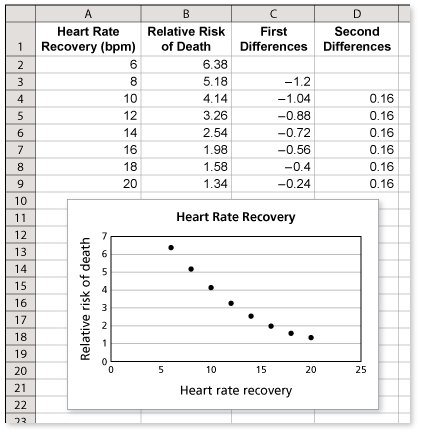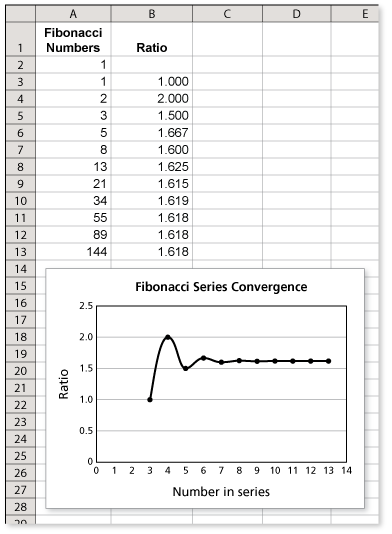-
Heart rate recovery is the reduction in heart rate from the rate at peak exercise to the rate 1 minute after the exercise has stopped. It can be used as a predictor of mortality. Heart rate is measured in beats per minute (bpm). The table shows the relative risk of death for various heart rate recoveries.
Describe the pattern of relative risk of death.
-
Use a spreadsheet to analyze the data.
Because the second differences are equal, the pattern is quadratic.
Notice that, during the minute following exercise, if your heart rate recovers only a little, then your risk of death is greater than if your heart rate recovers a lot.
Comments (0)These comments are not screened before publication. Constructive debate about the information on this page is welcome, but personal attacks are not. Please do not post comments that are commercial in nature or that violate copyright. Comments that we regard as obscene, defamatory, or intended to incite violence will be removed. If you find a comment offensive, you may flag it.
When posting a comment, you agree to our Terms of Use.Showing 0 commentsSubscribe by email Subscribe by RSSThere are no comments. -
-
Heart rate recovery is the reduction in heart rate from the rate at peak exercise to the rate 1 minute after the exercise has stopped. It can be used as a predictor of mortality. Heart rate is measured in beats per minute (bpm). The table shows the relative risk of death for various heart rate recoveries.
Extend the pattern to find the relative risk of death when the heart rate recovery is 22 beats per minute.
These comments are not screened before publication. Constructive debate about the information on this page is welcome, but personal attacks are not. Please do not post comments that are commercial in nature or that violate copyright. Comments that we regard as obscene, defamatory, or intended to incite violence will be removed. If you find a comment offensive, you may flag it.
When posting a comment, you agree to our Terms of Use. -
Heart rate recovery is the reduction in heart rate from the rate at peak exercise to the rate 1 minute after the exercise has stopped. It can be used as a predictor of mortality. Heart rate is measured in beats per minute (bpm). The table shows the relative risk of death for various heart rate recoveries.
Use a spreadsheet to graph the data. Describe the graph.
-
Use a spreadsheet to analyze and graph the data.
The graph is half of a U-shaped curve decreasing from left to right. This curve is parabolic.
These comments are not screened before publication. Constructive debate about the information on this page is welcome, but personal attacks are not. Please do not post comments that are commercial in nature or that violate copyright. Comments that we regard as obscene, defamatory, or intended to incite violence will be removed. If you find a comment offensive, you may flag it.
When posting a comment, you agree to our Terms of Use. -
-
The main components of an electrocardiogram (EKG) are the P wave, the electrical activity in the atria; the QRS complex, the electrical activity in the ventricles; and the T wave, the electrical recovery of the ventricles. The electrocardiograms of human heartbeats vary considerably depending on a variety of factors.
Some people believe that a peaceful heartbeat produces a rhythm related to the golden ratio. Use the EKG to describe how a peaceful heartbeat is related to the golden ratio.

These comments are not screened before publication. Constructive debate about the information on this page is welcome, but personal attacks are not. Please do not post comments that are commercial in nature or that violate copyright. Comments that we regard as obscene, defamatory, or intended to incite violence will be removed. If you find a comment offensive, you may flag it.
When posting a comment, you agree to our Terms of Use. -
The main components of an electrocardiogram (EKG) are the P wave, the electrical activity in the atria; the QRS complex, the electrical activity in the ventricles; and the T wave, the electrical recovery of the ventricles. The electrocardiograms of human heartbeats vary considerably depending on a variety of factors.
The table shows the approximate ratio of each successive pair of Fibonacci numbers. Graph the ratios. Identify any similarities to the EKG.
-
Use a spreadsheet to graph the ratios.
This graph resembles the tail end of the QRS complex shown on the EKG.
These comments are not screened before publication. Constructive debate about the information on this page is welcome, but personal attacks are not. Please do not post comments that are commercial in nature or that violate copyright. Comments that we regard as obscene, defamatory, or intended to incite violence will be removed. If you find a comment offensive, you may flag it.
When posting a comment, you agree to our Terms of Use. -
-
The main components of an electrocardiogram (EKG) are the P wave, the electrical activity in the atria; the QRS complex, the electrical activity in the ventricles; and the T wave, the electrical recovery of the ventricles. The electrocardiograms of human heartbeats vary considerably depending on a variety of factors.
Use the Internet to describe how blood pressure is related to the golden ratio.

These comments are not screened before publication. Constructive debate about the information on this page is welcome, but personal attacks are not. Please do not post comments that are commercial in nature or that violate copyright. Comments that we regard as obscene, defamatory, or intended to incite violence will be removed. If you find a comment offensive, you may flag it.
When posting a comment, you agree to our Terms of Use.











